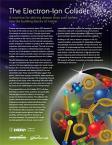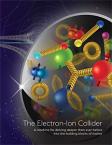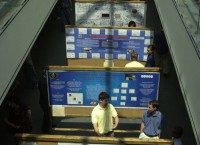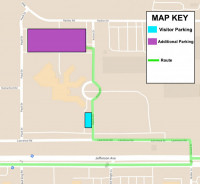JEFFERSON LAB SEARCH
Design

The Electron-Ion Collider would consist of two intersecting accelerators, one producing an intense beam of electrons, the other a beam of either protons or heavier atomic nuclei, which are then steered into head-on collisions.
The accelerators will be designed so that both beams can be polarized to around 70 percent for electrons, protons and light nuclei. Electrons will be able to probe particles from protons to the heaviest stable nuclei at a very wide range of energies, starting from 20–100 billion electron-volts (GeV), upgradable to approximately 140 GeV, to produce images of the particles’ interiors at higher and higher resolution. At least one detector and possibly more would analyze thousands of particle collisions per second, amassing the data required to tease out the smallest effects required for significant discoveries.
Building the EIC will require the same core expertise that led to the versatility of the polarized proton and heavy ion beams at the Relativistic Heavy Ion Collider (RHIC) at Brookhaven National Laboratory, and the unique polarized electron beam properties of the Continuous Electron Beam Accelerator Facility (CEBAF) at Thomas Jefferson National Accelerator Facility. These two Department of Energy laboratories have been collaborating on initial studies and developing designs that make use of key existing infrastructure and capitalize on investments in science and technology. Each design approach would require the development of innovative accelerator and detector technologies to answer the questions described in this brochure.
Goals
There are many scientific questions that researchers expect an Electron-Ion Collider will allow them to answer. Among them are four main topics of study.
 3D Structure of Protons and NucleiScientists would use the Electron-Ion Collider to take three-dimensional precision snapshots of the internal structure of protons and atomic nuclei. As they pierce through the larger particles, the high-energy electrons will interact with the internal microcosm to reveal unprecedented details—zooming in beyond the simplistic structure of three valence quarks bound by a mysterious force. Recent experiments indicate that gluons—the glue-like carriers of the strong nuclear force that binds quarks together—multiply and appear to linger within particles accelerated close to the speed of light, and play a significant role in establishing key properties of protons and nuclear matter. By taking images at a range of energies, an EIC will reveal features of this “ocean” of gluons and the “sea” of quark-antiquark pairs that form when gluons split—allowing scientists to map out the particles’ distribution and movement within protons and nuclei, similar to the way medical imaging technologies construct 3D dynamic images of the brain. These studies may help reveal how the energy of the massless gluons is transformed through Einstein’s famous equation, E=mc2, to generate most of the mass of visible matter.
3D Structure of Protons and NucleiScientists would use the Electron-Ion Collider to take three-dimensional precision snapshots of the internal structure of protons and atomic nuclei. As they pierce through the larger particles, the high-energy electrons will interact with the internal microcosm to reveal unprecedented details—zooming in beyond the simplistic structure of three valence quarks bound by a mysterious force. Recent experiments indicate that gluons—the glue-like carriers of the strong nuclear force that binds quarks together—multiply and appear to linger within particles accelerated close to the speed of light, and play a significant role in establishing key properties of protons and nuclear matter. By taking images at a range of energies, an EIC will reveal features of this “ocean” of gluons and the “sea” of quark-antiquark pairs that form when gluons split—allowing scientists to map out the particles’ distribution and movement within protons and nuclei, similar to the way medical imaging technologies construct 3D dynamic images of the brain. These studies may help reveal how the energy of the massless gluons is transformed through Einstein’s famous equation, E=mc2, to generate most of the mass of visible matter. Solving the Mystery of Proton SpinThe Electron-Ion Collider would be the world’s first polarized electron-proton collider where both the electron and proton beams have their spins aligned in a controllable way. This polarization makes it possible to make precision measurements of how a proton’s constituent quarks and gluons and their interactions contribute to the proton’s intrinsic angular momentum, or spin. Spin influences the proton’s optical, electrical, and magnetic characteristics and makes technologies such as MRI scanning work, but its origin has eluded physicists ever since experiments in the 1980s revealed that quarks can account for only about a third of the total spin. More recent experiments show that gluons make a significant contribution, perhaps even more than the quarks. An Electron-Ion Collider would produce definitive measurements of the gluons’ contributions, including how their movements within the proton microcosm affect its overall spin structure—thus providing the final pieces needed to solve this longstanding puzzle.
Solving the Mystery of Proton SpinThe Electron-Ion Collider would be the world’s first polarized electron-proton collider where both the electron and proton beams have their spins aligned in a controllable way. This polarization makes it possible to make precision measurements of how a proton’s constituent quarks and gluons and their interactions contribute to the proton’s intrinsic angular momentum, or spin. Spin influences the proton’s optical, electrical, and magnetic characteristics and makes technologies such as MRI scanning work, but its origin has eluded physicists ever since experiments in the 1980s revealed that quarks can account for only about a third of the total spin. More recent experiments show that gluons make a significant contribution, perhaps even more than the quarks. An Electron-Ion Collider would produce definitive measurements of the gluons’ contributions, including how their movements within the proton microcosm affect its overall spin structure—thus providing the final pieces needed to solve this longstanding puzzle. Search for SaturationCapturing the dynamic action of gluons within protons and nuclei will give scientists a way to test their understanding of these particles’ ephemeral properties. As gluons flit in and out of the vacuum, multiplying and recombining, scientists suspect they may reach a steady state of saturation called a “color glass condensate.” This unique form of nuclear matter gets its name from the “color” charges that mediate the interactions of the strong nuclear force, and the dense, glasslike walls these particles are thought to form in nuclei accelerated to nearly the speed of light, seemingly suspended by the effects of time dilation. Scientists will use the Electron-Ion Collider to search for definitive proof of whether this form of matter exists, and test the limits of gluons’ ability to expand beyond the bounds of a single proton/ neutron inside a nucleus. They’ll also explore the mechanism that keeps gluon growth in check, like a lid clamping down on an overflowing popcorn pot. Precisely measuring the strength of the gluon fields, which constitute the strongest fields found in nature, will tell us how gluons interact with each other and how they contribute to building the bulk of visible matter in the universe today.
Search for SaturationCapturing the dynamic action of gluons within protons and nuclei will give scientists a way to test their understanding of these particles’ ephemeral properties. As gluons flit in and out of the vacuum, multiplying and recombining, scientists suspect they may reach a steady state of saturation called a “color glass condensate.” This unique form of nuclear matter gets its name from the “color” charges that mediate the interactions of the strong nuclear force, and the dense, glasslike walls these particles are thought to form in nuclei accelerated to nearly the speed of light, seemingly suspended by the effects of time dilation. Scientists will use the Electron-Ion Collider to search for definitive proof of whether this form of matter exists, and test the limits of gluons’ ability to expand beyond the bounds of a single proton/ neutron inside a nucleus. They’ll also explore the mechanism that keeps gluon growth in check, like a lid clamping down on an overflowing popcorn pot. Precisely measuring the strength of the gluon fields, which constitute the strongest fields found in nature, will tell us how gluons interact with each other and how they contribute to building the bulk of visible matter in the universe today. Quark and Gluon ConfinementExperiments at an EIC would offer novel insight into why quarks or gluons can never be observed in isolation, but must transform into and remain confined within protons and nuclei. The EIC—with its unique combinations of high beam energies and intensities—would cast fresh light into quark and gluon confinement, a key puzzle in the Standard Model of physics.
Quark and Gluon ConfinementExperiments at an EIC would offer novel insight into why quarks or gluons can never be observed in isolation, but must transform into and remain confined within protons and nuclei. The EIC—with its unique combinations of high beam energies and intensities—would cast fresh light into quark and gluon confinement, a key puzzle in the Standard Model of physics.About
The Electron-Ion Collider is a proposed machine for delving deeper than ever before into the building blocks of matter, so that we may better understand the matter within us and its role in the universe around us.
Learn more about this first-of-its-kind machine in the documents linked below.
-
-
Contrary to popular belief, Lorem Ipsum is not simply random text. It has roots in a piece of classical Latin literature from 45 BC, making it over 2000 years old. Richard McClintock, a Latin professor at Hampden-Sydney College in Virginia, looked up one of the more obscure Latin words, consectetur, from a Lorem Ipsum passage, and going through the cites of the word in classical literature, discovered the undoubtable source. Lorem Ipsum comes from sections 1.10.32 and 1.10.33 of "de Finibus Bonorum et Malorum" (The Extremes of Good and Evil) by Cicero, written in 45 BC. This book is a treatise on the theory of ethics, very popular during the Renaissance. The first line of Lorem Ipsum, "Lorem ipsum dolor sit amet..", comes from a line in section 1.10.32.
Contrary to popular belief, Lorem Ipsum is not simply random text. It has roots in a piece of classical Latin literature from 45 BC, making it over 2000 years old. Richard McClintock, a Latin professor at Hampden-Sydney College in Virginia, looked up one of the more obscure Latin words, consectetur, from a Lorem Ipsum passage, and going through the cites of the word in classical literature, discovered the undoubtable source. Lorem Ipsum comes from sections 1.10.32 and 1.10.33 of "de Finibus Bonorum et Malorum" (The Extremes of Good and Evil) by Cicero, written in 45 BC. This book is a treatise on the theory of ethics, very popular during the Renaissance. The first line of Lorem Ipsum, "Lorem ipsum dolor sit amet..", comes from a line in section 1.10.32.
Contrary to popular belief, Lorem Ipsum is not simply random text. It has roots in a piece of classical Latin literature from 45 BC, making it over 2000 years old. Richard McClintock, a Latin professor at Hampden-Sydney College in Virginia, looked up one of the more obscure Latin words, consectetur, from a Lorem Ipsum passage, and going through the cites of the word in classical literature, discovered the undoubtable source. Lorem Ipsum comes from sections 1.10.32 and 1.10.33 of "de Finibus Bonorum et Malorum" (The Extremes of Good and Evil) by Cicero, written in 45 BC. This book is a treatise on the theory of ethics, very popular during the Renaissance. The first line of Lorem Ipsum, "Lorem ipsum dolor sit amet..", comes from a line in section 1.10.32.
Contrary to popular belief, Lorem Ipsum is not simply random text. It has roots in a piece of classical Latin literature from 45 BC, making it over 2000 years old. Richard McClintock, a Latin professor at Hampden-Sydney College in Virginia, looked up one of the more obscure Latin words, consectetur, from a Lorem Ipsum passage, and going through the cites of the word in classical literature, discovered the undoubtable source. Lorem Ipsum comes from sections 1.10.32 and 1.10.33 of "de Finibus Bonorum et Malorum" (The Extremes of Good and Evil) by Cicero, written in 45 BC. This book is a treatise on the theory of ethics, very popular during the Renaissance. The first line of Lorem Ipsum, "Lorem ipsum dolor sit amet..", comes from a line in section 1.10.32.
Contrary to popular belief, Lorem Ipsum is not simply random text. It has roots in a piece of classical Latin literature from 45 BC, making it over 2000 years old. Richard McClintock, a Latin professor at Hampden-Sydney College in Virginia, looked up one of the more obscure Latin words, consectetur, from a Lorem Ipsum passage, and going through the cites of the word in classical literature, discovered the undoubtable source. Lorem Ipsum comes from sections 1.10.32 and 1.10.33 of "de Finibus Bonorum et Malorum" (The Extremes of Good and Evil) by Cicero, written in 45 BC. This book is a treatise on the theory of ethics, very popular during the Renaissance. The first line of Lorem Ipsum, "Lorem ipsum dolor sit amet..", comes from a line in section 1.10.32.
-
jnfslk nflk gnfdlgd
NEW POLICY - PLEASE READ!!!! fgsdf sdfsdfsdf sdf sd fsdf fgdf fd gdf gdf
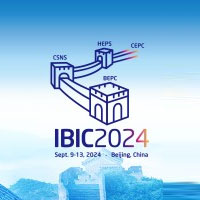
- sd mvnw vnwdfovn wfvnnl vw nov wov
- no vnowsd mvnw vnwdfovn wfvnnl vw nov w
- ovno vnowsd mvnw vnwd
- fovn wfvnnl vw nov wovno vnowsd m
- vnw vnwdfovn wfvnnl vw nov
- wovno vnowsd mvnw vnwdfov
- n wfvnnl vw nov wovno vnowsd mvnw vnwdfovn wfvnnl vw nov wovno vnowsd mvnw vnwdfovn wfvnnl vw
- nov wovno vn
- owsd mvnw vnwdfovn wfvnnl vw nov wovno vnowsd mvnw vnwdfovn wfvnnl vw nov wovno vnow
erterter tret ert er ter t
sfgdg dfg dfgdfg dfgdfg dfgdfgdfgff gdfgdfg dfgdfg dfgdfg dfgdf dfgdfg sd mvnw vnwdfovn wfvnnl vw nov wovno vnowsd mvnw vnwdfovn wfvnnl vw nov wovno vnowsd mvnw vnwdfovn wfvnnl vw nov wovno vnowsd mvnw vnwdfovn wfvnnl vw nov wovno vnowsd mvnw vnwdfovn wfvnnl vw nov wovno vnowsd mvnw vnwdfovn wfvnnl vw nov wovno vnowsd mvnw vnwdfovn wfvnnl vw nov wovno vnowsd mvnw vnwdfovn wfvnnl vw nov wovno vno
gertgertretertertert et ret ert
kjhkjhkjhkjhkjhk njh hhn fh gdhgf h
sd mvnw vnwdfovn wfvnnl vw nov wovno vnowsd mvnw vnwdfovn wfvnnl vw nov wovno vnowsd mvnw vnwdfovn wfvnnl vw nov wovno vnowsd mvnw vnwdfovn wfvnnl vw nov wovno vnowsd mvnw vnwdfovn wfvnnl vw nov wovno vnowsd mvnw vnwdfovn wfvnnl vw nov wovno vnow
- Femtocenter.org website: maintenance and updates to standalone website. This includes added costs for security and platform updates. Work is verified by the webmaster and processed directly through JSA to the lab’s Drupal CMS contractor.
- HPDF website: maintenance and updates to standalone website. This includes added costs for security and platform updates. Work is verified by the webmaster and processed directly through HPDF to the lab’s Drupal CMS contractor
Web server support. Work with the CST division to maintain, update and upgrade existing file servers that interact with the lab’s websites. Submit Service Now tickets and follow up on them when web servers need upgrades or
- sd mvnw vnwdfovn wfvnnl vw nov wov
-
Jefferson Lab Special Topic Fellowships
APPLICATIONS ARE OPEN For 2024
The EIC Center at Jefferson Lab, EIC2, is pleased to announce opportunities for graduate and post-doctoral fellowships.
These fellowships will be awarded to fund coming to Jefferson Lab to research a special topic. The current areas of research include theory, simulations, detectors, and computing as they relate to the EIC, Positrons or the proposed JLab 22 GeV upgrade. Each fellowship will provide travel to Jefferson Lab, housing and a per diem for a typical stay of ten weeks at the lab.
Eligible students must be enrolled full-time in a relevant doctoral program. Postdocs must have a full-time position with a relevant university or laboratory research program. . The awardees may not concurrently hold another major full-time fellowship or internship. The award is limited to once a year though awardees can reapply for an additional year.
To apply, a research plan must be provided according to the guidance provided below. The plan should be written by the applicant together with their university or laboratory advisor. The plan should contain clear goals and deliverable to be accomplished by the end of the Fellowship visit. Working with a Jefferson Lab staff member is encouraged.
The applications will be evaluated on an ongoing basis according to the following criteria:
- Merit and quality of proposed research
- Relevance of the proposed research to the Electron-Ion Collider, Positron Program and/or 22 GeV Upgrade
- Likelihood that the proposed research can be successfully accomplished within the Fellowship period.
- Letters of recommendation.
The following application will be reviewed on an rolling basis.
- Proposed research plan as described above. Maximum 3 pages with 11-point type.
- CV of the candidate
- At least one letters of recommendation is strongly encouraged
The application materials must be sent by email to Patricia Cheeseboro <pcheese@jlab.org>.
Inquiries about the fellowship program should be directed to: Douglas Higinbotham (doug@jlab.org)
Press releases about past winners of the program can be found at the following links:







